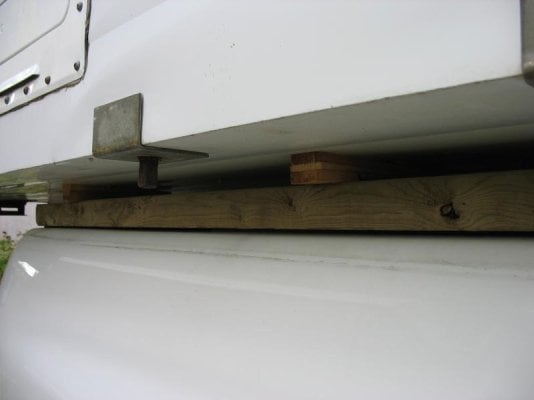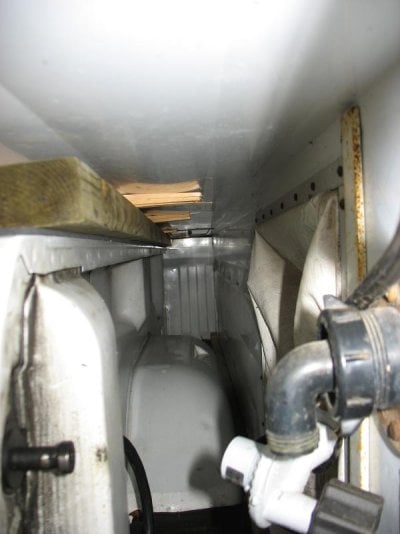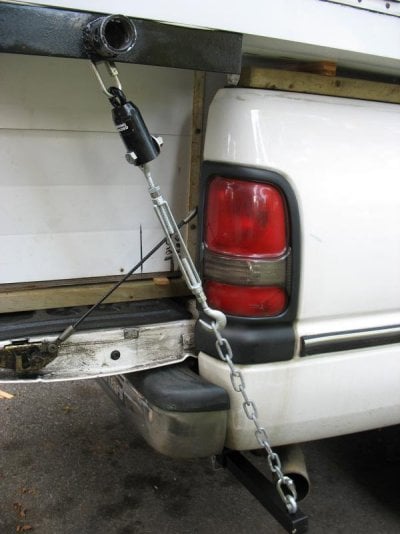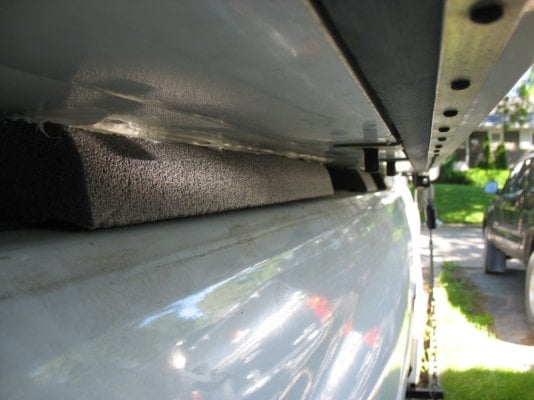Land-roamer
Advanced Member
Another question re: my 10ft NCO installation on my pickup.
I built a wood and insulation platform in the bed of the truck prior to installation, which has raised the camper. So there is a gap between the top of the truck bed sides and the bottom of the side overhangs of the camper. I thought it might be useful to provide some support for the side overhangs, so installed a length of 2x4 on the truck bed sides and used wood shims to fill in the gap and provide support.
Unfortunately, while driving on bumpy roads, the flexing of the bed and the camper means that the shims come loose and fall off, and the 2x4 threatens to fall off (since it's not secured).
1. do I NEED to provide support to the side overhangs of the camper in the manner described?
2. if yes, how would you suggest I get something appropriate to fill the gap and provide the support in a way that won't come apart on the road?
Here are a couple of pics of my installation:
I built a wood and insulation platform in the bed of the truck prior to installation, which has raised the camper. So there is a gap between the top of the truck bed sides and the bottom of the side overhangs of the camper. I thought it might be useful to provide some support for the side overhangs, so installed a length of 2x4 on the truck bed sides and used wood shims to fill in the gap and provide support.
Unfortunately, while driving on bumpy roads, the flexing of the bed and the camper means that the shims come loose and fall off, and the 2x4 threatens to fall off (since it's not secured).
1. do I NEED to provide support to the side overhangs of the camper in the manner described?
2. if yes, how would you suggest I get something appropriate to fill the gap and provide the support in a way that won't come apart on the road?
Here are a couple of pics of my installation:










